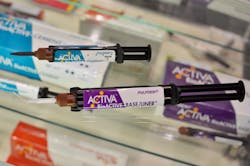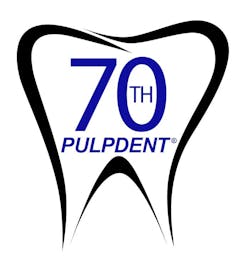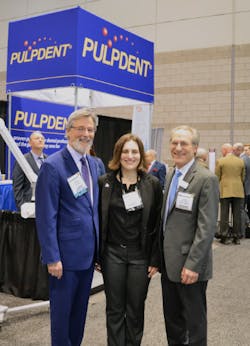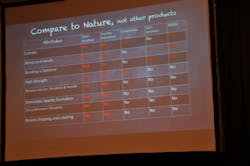Activa Bioactive: The story behind Pulpdent's breakthrough bioactive restorative
The success of Pulpdent's Activa Bioactive can be traced to the company's unique approach to research and development—and 20 years of hard work.
Learn more in part two of this Apex360 interview with Pulpdent's Fred Berk.
Editor's note: This article is part two of a two-part feature. In part one, Pulpdent Vice President Fred Berk describes the 70-year history of Pulpdent, which saw the family company grow from small trading outfit to a leader in dental material research.
Three years earlier, in 2014, many in the room had attended a similar press conference at Chicago Midwinter. It was then Clark announced the launch of Activa Bioactive to the dental market. So what new information did Clark have to share today?
As we soon found out, Clark was bringing news from the front lines of restorative dentistry. Since the launch of Activa, word was getting out about the product's unique properties and its durability. The "street credibility" of the product was growing, and Pulpdent was on a mission to educate the uninformed.
Through the course of his presentation, Clark highlighted the hallmarks of Activa Bioactive and the philosophy of bioactive materials:
- "The dentin and enamel respond in a positive manner to the material being placed."
- "Bioactive restorative releases calcium and phosphate minerals to the demineralized prepared tooth, returning the minerals lost during the procedure or from caries. These minerals form a seal and a bond with the tooth-structure."
- "There is an absence of a hybrid layer. There is a chemical and micro-mechanical bond."
According to Clark, more than 3 million restorations using Activa Bioactive had been completed to date. Case reports told of tight seals, no microleakage, no secondary caries, excellent wear, excellent esthetics, lack of sensitivity . . .
In short, Pulpdent's nearly 20-year investment had paid off.
To understand how a midsized, family-owned company came to embrace the philosophy of bioactivity—while maintaining an eye on the greater good—I interviewed Pulpdent Vice President Fred Berk. After recounting the highlights of the company's 70-year history, Berk provided an inside look into the making of Activa Bioactive, along with Pulpdent's plans for a bioactive future.
Activa Bioactive is a unique product—and a signature one. Walk us through the R&D process. When did the genesis of the idea occur? How long did it take for you to get it right, and when did you know it was ready for market?
The process of research and development is evolving and cumulative, often over long periods of time. Activa developed over the course of almost 20 years.
The mouth is a wet environment, but traditional dental resins are hydrophobic. We had a different idea and developed resin materials that are moisture tolerant and work favorably in the moist oral environment. It seems logical, but no one was doing it.
We looked at provisional materials, and we saw that acrylics and bisacrylics were brittle. There was a need for more fracture-resistant materials. We synthesized a new molecule, which we patented, by splicing a synthetic rubber molecule into a diurethane dimethacrylate molecule. Imagine creating a new molecule! It still amazes me, and studies consistently show that the addition of this molecule provides far greater toughness, fracture resistance, deflection at break, flexural strength, and flexural fatigue values than all other dental materials.
We are processing glass and silica fillers for composite materials all the time. Our research team began to put these various chemistries and fillers together in different ways to develop products for various dental applications. This is how Activa was born.
There is not exactly a moment when you have a new idea, but the accumulation of knowledge—together with a creative thought process—leads you down a path. Literally thousands of experiments provide a vast canvas of data points with unlimited combinations and permutations. The science team has to decide what to do next. The most precious resource is time. Scientific discovery is not on the clock, and we worked for years to get Activa right.
During this whole multi-year process, there are numerous animal studies, biocompatibility studies, bone implant studies, microleakage studies, etc., and a great many studies on mechanical and chemical properties of the materials at every stage of development. The results direct the next step in the research. In addition to our in-house science team and consulting dentists, we are working with scientists who have expertise in highly specialized fields of investigation. We did studies at universities around the country and around the world.
Once we have a product in the final stages of development, and we know all the ingredients, percentages and tolerances, we file the 510(k) premarket application with the FDA. The Activa dossier, with all the scientific data, was massive. Upon approval, our first tier of dental evaluators uses the product. This clinical evaluation period can be quite long, and this is when we make small adjustments to the handling characteristics and esthetics of the material. The material has to work well in the hands of the dentist.
At the same time, we are developing our marketing materials. Our science and marketing teams meet every week, so everyone is up to date with the scientific concepts behind the materials. We are educators at heart, so our approach is to explain the research and chemistry in accessible language, along with how it benefits the dentist and the patient. Because Activa is unique, so is our story, and it resonates with dentists, who are highly skilled and educated professionals.
Photo left: Pulpdent's Larry Clark, Leah Berk, and Fred Berk
Since Activa Bioactive's introduction to the marketplace, how have you worked to put the product in the hands of dentists? In other words, how did you gain their trust in the product?
This is always the challenge for small- to mid-size companies. We have a strong following of dentists after so many years, and we have support from our dental dealers. We relied on the strength of the science, the success of the material in clinical use, and our marketing and sales team led by Larry Clark and Marcy Buckler. Larry has lectured worldwide on Activa, and the response is remarkable.
We gained the trust of dentists because Activa performed. One dentist posted on Dentaltown that Activa appears to melt into the tooth. This is totally unique. Traditional resins are repelled by the tooth. Activa wants to become part of the tooth. Dentists who have used the material for two, three, or four years (in the case of premarket evaluators) see no leakage or brown lines. The Activa difference is palpable.
It sounds like Activa Bioactive is beginning to gain traction in the marketplace . . .
It is. Researchers who have studied the product and educators who use it include Activa in their lectures. Articles are being written. Studies on Activa are being conducted at universities worldwide. There is chatter online. Dentists are telling one another. When Howard Glazer, Ted Croll, Bob Lowe, and others love a product, dentists hear about it. John Comisi, a clinician and visionary thinker in the field of bioactive materials, has been using Activa for four years and informs clinicians worldwide in the bioactive materials forums. Dentaltown and DrBicuspid have had active blogs on Activa.
It is easier to get the word out today than it was 20 years ago, but for there to be a buzz and really resonate, you have to have something special. Activa is a unique product. There is nothing else like it. Our strategy was to work hard at something we really believe in, and Activa did the rest.
Above: Slide from Larry Clark's presentation on Activa Bioactive at the 2017 Chicago Midwinter Meeting
Is there anything you'd like dentists to know about Activa Bioactive that they might not know?
All fields of medicine and technology are advancing rapidly. Bioactive materials that play a dynamic role in the mouth, help neutralize the conditions that cause caries, and stimulate the natural remineralization process are the future of dental materials. Pulpdent is the first company to develop esthetic bioactive restorative materials, and I encourage practitioners to go to our website, study the science and clinical indications, and give Activa a try.
Your second-generation Activa Bioactive products are coming in the next few years. That has to be exciting.
Yes—the second generation of Activa products incorporates a very active material we refer to as modified calcium phosphate (MCP). This is a methacrylated calcium phosphate in a transitional stage that becomes active in the presence of saliva. It is a one-part system backed by years of research, and it is a part of the twenty-year research continuum we have discussed already.
Looking to the future, are there new areas or research that Pulpdent is exploring?
I would love to tell you about completely new ideas that already exist as products in our laboratory. It is the science of the future, and we have it in hand. They play an important role in prevention, which we think is the model for dentistry and the health-care system in general. These materials can provide benefits for a great number of people, including underserved populations. But the long validation and regulatory process lies ahead, so we will have to talk about it at a later time.
Editor's note: Part one of this interview may be found at the link below.
Zachary Kulsrud is senior editor of PennWell's dental group. He serves as chief editor of Apex360 and managing editor of Dental Economics, and oversees the editorial team of DentistryIQ and Perio-Implant Advisory. His background includes work in advertising and broadcast production.
MORE FROM THIS AUTHOR:
15,000 patients a day: Exclusive interview with Bob Fontana, CEO of Aspen Dental Management Inc.
Dental school disruption 101: The story of CRET
The making of master craftsmen: Inside the groundbreaking Hu-Friedy apprenticeship program
Editor's note: This article first appeared in the Apex360 e-newsletter. Apex360 is a DentistryIQ partner publication for dental practitioners and members of the dental industry. Its goal is to provide timely dental information and present it in meaningful context, empowering those in the dental space to make better business decisions. Subscribe to the Apex360 e-newsletter here.
For the most current dental headlines, click here.
About the Author
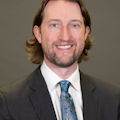
Zachary Kulsrud
Zachary Kulsrud is the editorial director for Endeavor Business Media's dental group, publishers of Dental Economics, DentistryIQ, Perio-Implant Advisory, and RDH magazine.
Updated July 7, 2020


